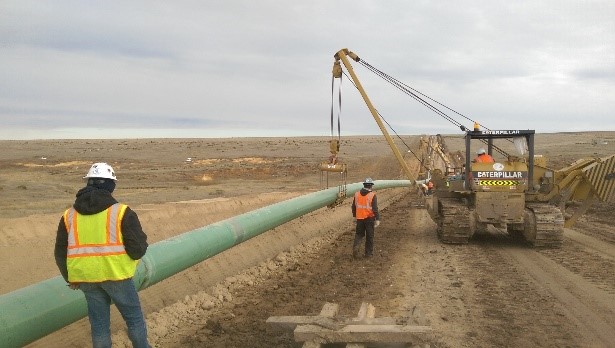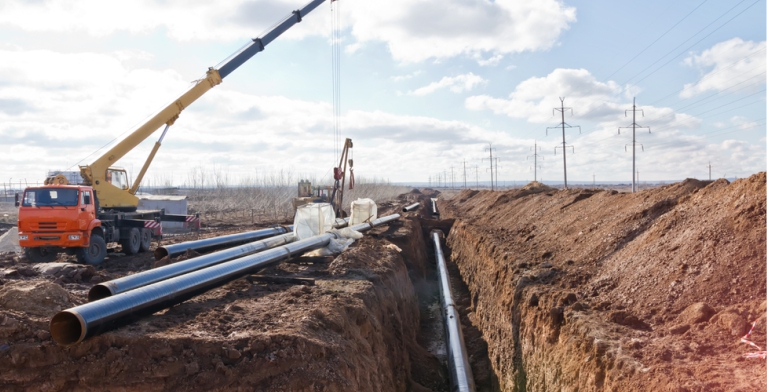What to Expect When Hiring Creek Pipe roustabout Teams
Comprehending the Essentials of Pipes Installation: What You Need to Find Out About the Process
Correct pipe installation is essential for any kind of pipes system. It calls for cautious consideration of various aspects, including product option and adherence to regional regulations. A well-planned format can protect against concerns like stress loss, while the right devices ensure reliable signing up with strategies. Even experienced installers can make typical blunders. Understanding these essentials can result in a more reliable and long lasting system, triggering a closer consider the essential components entailed in the process.
Selecting the Right Products for Pipe Installation
When considering pipe installation, the option of appropriate materials is important to making certain sturdiness and performance. Numerous products are readily available, each offering unique benefits and considerations. As an example, PVC pipes are light-weight, immune to deterioration, and economical, making them suitable for household plumbing. Alternatively, copper pipelines, known for their long life and capability to stand up to heats, are often liked for home heating systems.Additionally, galvanized steel pipelines supply toughness and durability, appropriate for sturdy applications, although they are vulnerable to rust over time.For below ground installments, polyethylene pipes are favored as a result of their versatility and resistance to tension splitting. Appropriate product selection depends on the specific requirements of the project, including pressure scores, temperature variations, and the chemical nature of the liquids being transported - Creek Pipe reviews. Ultimately, educated selections pertaining to pipe products contribute considerably to the overall success and long life of plumbing systems
Comprehending Local Building Regulations and Regulations
Exactly how can comprehending local structure codes and guidelines impact pipe installation? Experience with these codes is essential for making certain that pipe installments are secure, compliant, and efficient. Local building regulations detail particular demands concerning products, installation strategies, and precaution, which must be complied with to avoid prospective lawful issues and pricey fines.Failure to abide can bring about examinations being stopped working, hold-ups in project conclusion, and even mandated elimination of poorly set up pipelines. Additionally, comprehending zoning laws and policies can influence the type of materials permitted, along with the approaches used for installation.Contractors and house owners alike should spend time in evaluating local policies prior to commencing any kind of installation job. This proactive technique not only advertises safety and security yet also improves the general high quality and longevity of the pipes system, eventually cultivating long-lasting performance and satisfaction.
Planning Your Pipe Design and Style
Proper preparation of pipe layout and layout is vital for accomplishing an efficient pipes system. This process starts with assessing the specific demands of the space, taking into consideration the location of components and home appliances. Exact measurements ensure that pipes are properly transmitted, reducing bends and transforms that can result in push loss.Consideration of the flow prices and the kinds of products used is important, as different products have varying longevity and compatibility with plumbing systems. Additionally, the designer must make up future expansions or alterations to the design, enabling versatility in instance of renovations.Efficient drainage and ventilation are additionally significant elements of the design, as they avoid obstructions and guarantee appropriate waste elimination. Collaboration with regional structure codes ensures conformity and safety, which is vital in any kind of pipes installation task.
Vital Devices and Equipment for Installation
Successful pipe installation depends upon having the right devices and tools at hand. Necessary tools include pipe cutters for tidy cuts, wrenches for tightening up installations, and pliers for gripping and transforming pipelines. Additionally, a level warranties pipelines are mounted uniformly, while a measuring tape aids in achieving accurate lengths.For certain products, a soldering iron might be necessary for copper pipelines, while a PVC cutter is vital for plastic alternatives. Security devices, such as handwear covers and safety glasses, secures installers from possible dangers during the process.A pipeline bender can be especially valuable for creating smooth contours without compromising honesty, while a torque wrench assurances that links are safeguarded to the manufacturer's specifications.Having these devices readily offered not just helps with a smoother installation procedure however likewise contributes to the overall resilience and capability of the plumbing system. Correct devices is vital in accomplishing resilient results.
Techniques for Correct Pipe Joining and Sealing
Attaining a secure and leak-free connection in between pipes requires mindful interest to joining and securing techniques. Various approaches exist, each fit to different pipe products and applications (Creek Pipe near me). Welding is commonly utilized for steel pipes, guaranteeing durable links via warm combination. On the other hand, plastic pipelines gain from solvent cement or fusion welding, creating strong, permanent bonds.Threaded connections are common in both steel and plastic piping, needing accurate alignment and the usage of proper sealants, such as Teflon tape or pipe dope, to stop leakages. Compression installations offer one more choice, where mechanical pressure protects the pipelines with each other, making them quickly dismantled for maintenance.Regardless of the method selected, appropriate prep work is vital. This includes cleaning pipe finishes and guaranteeing they are without particles. Applying these techniques vigilantly will boost the long life and reliability of the pipe system, eventually adding to its efficient performance
Usual Mistakes to Avoid During Installation
Throughout pipe installation, staying clear of common errors is the original source important for ensuring a reliable and effective system. One constant error is falling short to measure and reduce pipes properly, which can lead to inappropriate fittings and leakages. Furthermore, disregarding to check the compatibility of products can result in rust or various other damages over time. Poorly securing joints and connections can likewise develop powerlessness in the system, causing prospective failures.Another usual mistake is overlooking the relevance of slope and drain; pipelines must be set up at the appropriate angle to help with proper circulation. Inadequate assistance for pipes can lead to drooping and stress and anxiety, influencing the stability of the system. Eventually, disregarding local codes and regulations can cause expensive rework and security risks. By recognizing these pitfalls, installers can greatly boost the longevity and efficiency of pipe systems.
Upkeep Tips for Durable Pipe Equipments
To ensure the long life of pipe systems, routine inspections and cleaning are essential methods. These measures assist recognize potential problems prior to they rise into significant troubles. Additionally, using proper insulation strategies can further secure pipelines from temperature variations and ecological factors.
Normal Inspections and Cleaning Up
Regular inspections and cleaning are important for maintaining the longevity and efficiency of pipe systems. On a regular basis taking a look at pipelines for indications of deterioration, leaks, or blockages can aid identify prospective issues prior to they escalate right into expensive repair work. Cleaning pipelines regularly eliminates build-up that can limit circulation and advertise degeneration. It is advisable to arrange inspections a minimum of annually, but extra frequent checks might be required in high-usage environments. Using expert services for extensive cleaning assurances that all debris is efficiently cleared. In addition, keeping records of evaluations and maintenance activities aids in tracking the system's wellness with time - Creek Pipe contact. By prioritizing these techniques, home owners can enhance the integrity and life-span of their pipe systems
Appropriate Insulation Methods
Effective insulation techniques play an essential role in keeping the performance and durability of pipe systems. Proper insulation minimizes heat loss in warm water pipelines and protects against freezing in cold water pipelines, significantly reducing power expenses and possible damage. Usual products used for insulation consist of fiberglass, foam, and rubber, each why not try these out offering varying levels of thermal resistance. It is crucial to guarantee that insulation is used consistently, covering all exposed locations without gaps. In addition, protecting insulation with appropriate bolts assists maintain its placement and effectiveness in time. Regular assessments ought to be carried out to determine wear and tear, ensuring prompt replacements. By applying these methods, pipe systems can run efficiently and have a prolonged life span, ultimately profiting both the setting and the property owner.

Frequently Asked Questions
Exactly how Do I Establish the Appropriate Pipe Dimension for My Job?
Establishing the appropriate pipe size involves assessing the job's circulation needs, stress requirements, and the sort of fluid being carried. Consulting layout criteria and performing calculations assurances excellent performance and efficiency in the installation process.
What Are the Environmental Influences of Different Pipe Products?

Can I Set Up Pipes Myself or Should I Hire an Expert?
The question of whether to set up pipelines independently or employ an expert usually depends upon the person's ability degree and job complexity. A professional might assure conformity with policies and decrease potential lasting concerns.

Exactly How Long Can I Expect My Pipe Installation to Last?
The durability of pipe installation varies significantly, normally lasting 20 to 100 years, depending on products, installation top quality, and upkeep. Normal assessments and appropriate care can enhance sturdiness and stop premature failures.

What Are the Signs of a Failing Pipe System?
Signs of a failing pipe system Web Site include frequent leaks, unusual water pressure modifications, tarnished water, mold and mildew growth, and consistent dampness. Property owners ought to keep track of these signs to prevent costly damage and guarantee timely repairs are made.